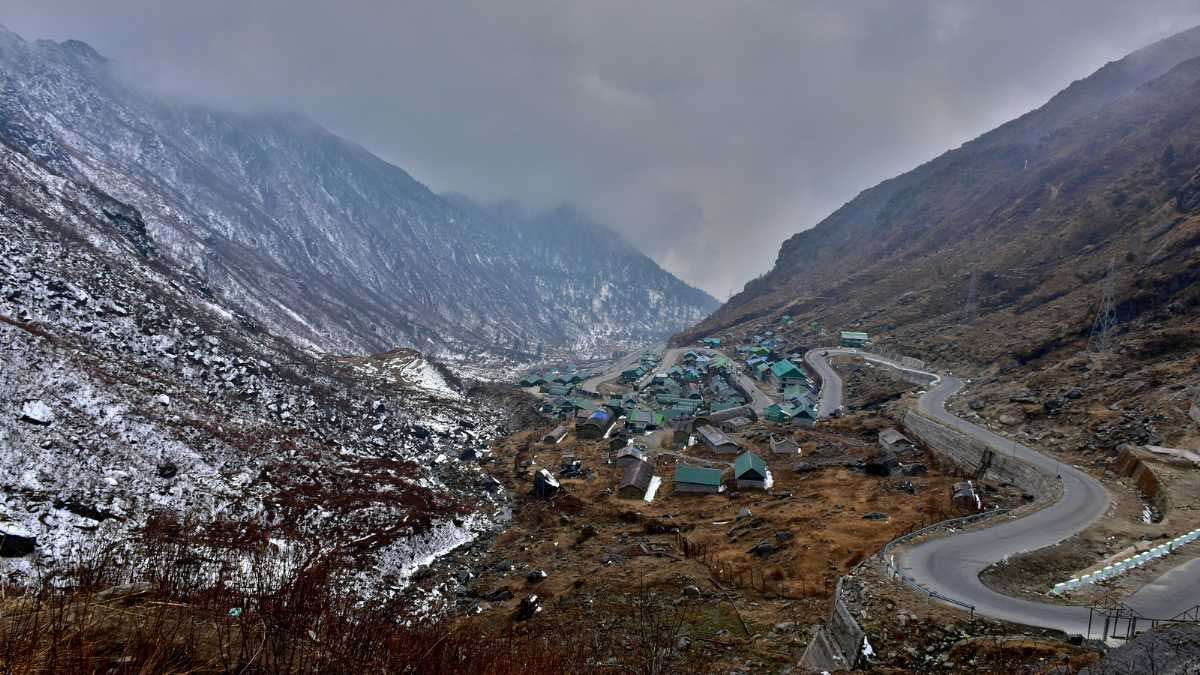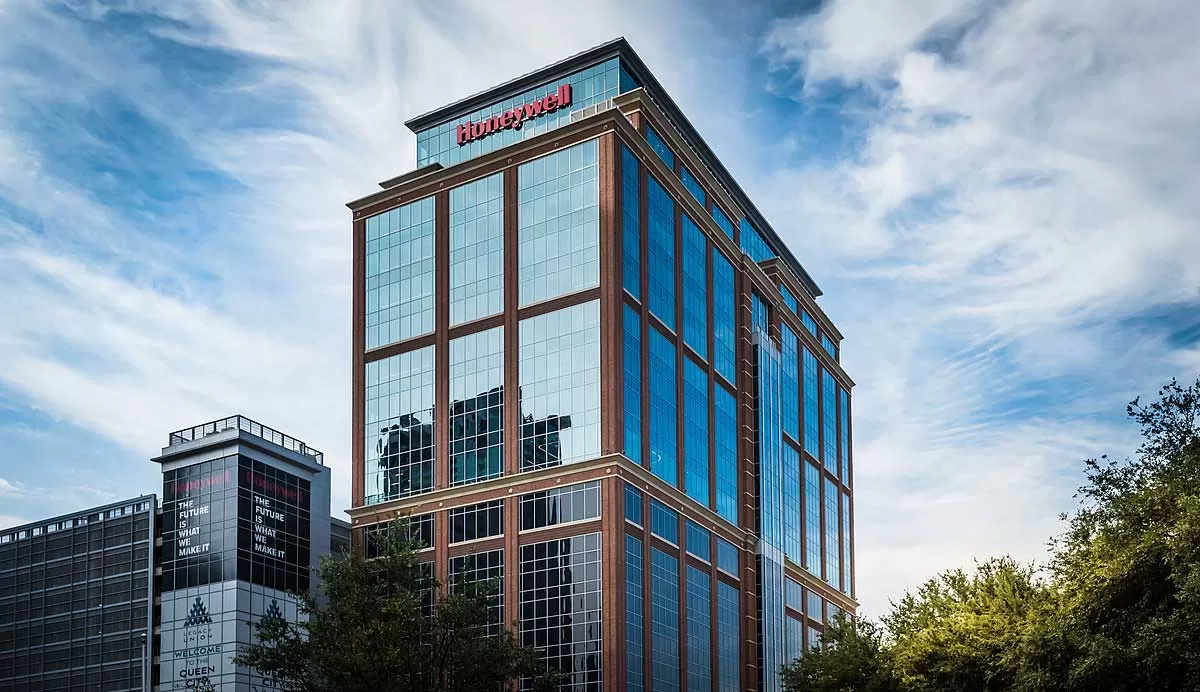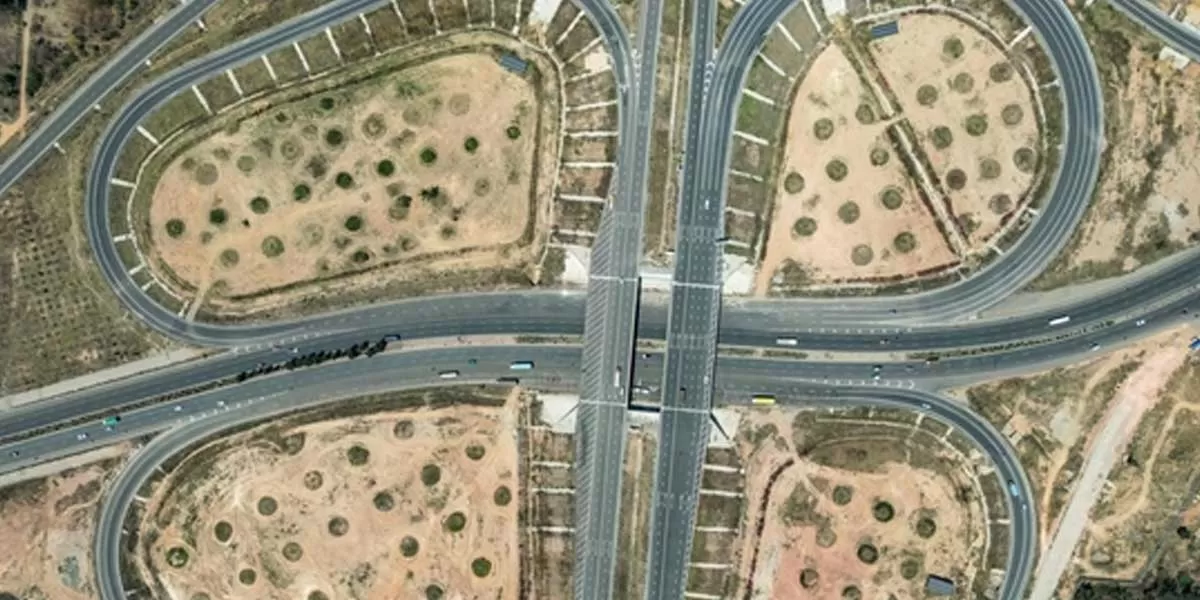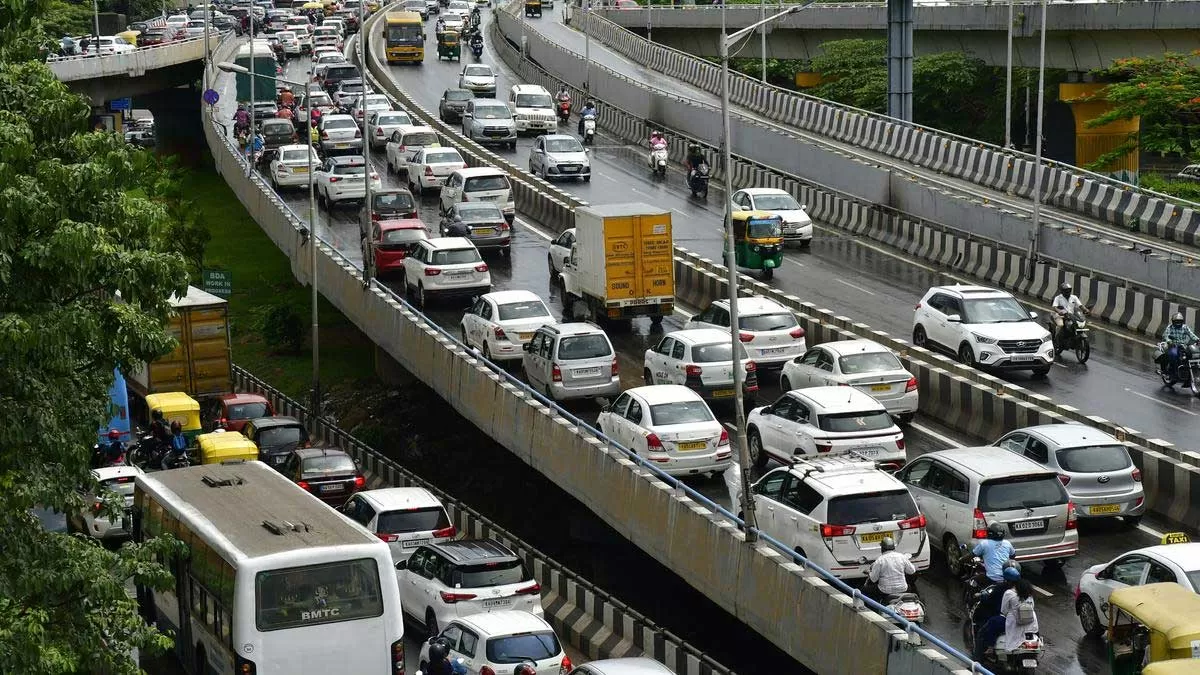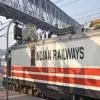The natural beauty and cultural legacy of North East India are well-known. However, it also presents the problem of upgrading the infrastructure to meet modern standards. The government is making a lot of effort to shape growth in this area for a higher quality of life and its abundant commercial opportunities.The northeast area is writing a new history of connectivity which Prime Minister Narendra Modi emphasised during his 75th Independence Day speech as he linked to the region's economic development. In the North Eastern region, the Ministry of Road Transport & Highways has taken up a number of significant national highway development projects.Under the NDA government, the amount of national highway being built in the North East more than doubled, going from just 0.6 km per day under the previous UPA government to 1.5 km per day between 2014 and 2019, an all-time high. The National Highways Authority of India (NHAI) and the Border Roads Organisation (BRO), among other central organisations, have constructed 2,731 km of national highways in the eight North Eastern states during the same time period. The UPA had constructed 1,079.25 km of roads between 2009 and 2014.Prime Minister Narendra Modi launched his ambitious ‘Look East Strategy’ which has been changed to ‘Act East Policy’ after recognising the enormous growth potential in the North Eastern states. He pictured Southeast Asia as being reached through the North Eastern states of India. Agartala-Akhaura rail and the India-Myanmar-Thailand trilateral roadway are two projects actively under construction to realise this promise. When finished, these would revolutionise the area.The North Eastern Region (NER) now has 16 airports, up from 9 in the previous nine years, and there are around 1,900 more flights per day. Several North Eastern states have just appeared on the railway map of India, and attempts are also being undertaken to widen the rivers. Since 2014, the length of national highways in the area has expanded by 50 per cent.By expanding the optical fibre network, the government is also attempting to improve digital connection in the North East. The region's start-up ecosystem and service industry, among other things, will benefit from the expansion of 5G. All North Eastern states have access to basic rail connections as of this year, following Manipur's connection to the railway network. A new, ambitious plan by the Railways calls for spending over Rs 952.61 billion on 21 projects, including a connection between the capitals of Manipur, Mizoram, and Meghalaya by the end of 2023 and Nagaland by 2026.Infrastructure ProjectsTo address the issue of connectivity in this region, the government has initiated a slew of infrastructural projects related to air, railways, roads, waterways, etc. The union government has been pumping in huge money to develop several infrastructure projects. The centre is spending over Rs 740 billion for 20 railway projects covering a length of 2,011 km. The centre is also developing 4,000 km of roads in the region at a total cost of Rs 580 billion. Fifteen projects for air connectivity involving an expenditure of Rs 22 billion are also ongoing in the region. Better connectivity in the North Eastern region is essential to fully tap its tourism potential, ease the transportation of goods, improve the delivery of services and contribute to the overall development of the region.Road NetworkConnectivity in hilly regions such as North Eastern states in India is a challenge. The Ministry develops road network in North Eastern states under the Special Accelerated Road Development Programme (SARDP-NE). The programme seeks to provide connectivity to backward and remote areas and ensure that headquarters in the North Eastern region seek to be connected by at least two-lane highway standards. The average road density in North Eastern states is 2,259 km per thousand sq km. The rural network in North Eastern states is relatively better compared to other categories of road. Among the North Eastern states, Sikkim has the highest proportion of surfaced roads (76 per cent) followed by Mizoram (67 per cent).As per the Ministry of Road Transport & Highways, the length of National Highways (NH) per 1,000 sq km of area in the North Eastern Region (NER) is approximately 52 km as compared to 40.2 km for the country. The length of NH in each of the NER states is more than the national average, except in Arunachal Pradesh.In order to enhance the connectivity in other North East region states, the government has been implementing various projects under the Special Accelerated Road Development Programme for North East (SARDP-NE) and the Bharatmala Pariyojana. As a result, the length of the National Highways has increased from 10,905 km in 2014-15 to 13,710 km.Interestingly, a total of 4016.22 km of roads costing Rs 583.85 billion are under construction in NER. These projects were undertaken during the last five years (FY 2016-17 to FY 2021-22). This includes 34 projects in Arunachal Pradesh, 29 projects in Assam, 33 in Manipur, 18 in Meghalaya, 23 in Mizoram, 39 in Nagaland, 17 in Sikkim, and 20 projects in Tripura. The ongoing projects are expected to be completed by May 2024.Rail NetworkThe National Transport Development Policy Committee (2013) observed that roads are a preferred mode of transport for carrying small loads over short distances to remote or easily accessible destinations. For example, it is preferable to transport food grain by road, across distances of about 200 km. At distances greater than 200 km, rail is a preferred mode. This is true despite accounting for delays at intermodal nodes where grain is transferred from/to trucks.In India, passengers and freight transported by road have increased between 2011-12 and 2017-18. The amount of freight transported by road has increased by 9.7 per cent, while the number of passengers has increased by 13 per cent. In 2020, roads carried 71 per cent of all freight, compared to the 18 per cent carried by rail.As of 1 April 2020, against a national average of 21 km/1000 sq km railway network density, North Eastern states have an average railway network density of 10.79 km/1000 sq km. To bridge this gap, 20 projects costing Rs 744.85 billion for 2,011 km length falling fully or partly in the North Eastern Region are under different stages of planning, approval, and execution.These include 14 new line projects covering a length of 1,181 km at the cost of Rs 565.53 billion, out of which 253 km length has been commissioned, and an expenditure of Rs 239.94 billion incurred up to March 2021, and six doubling/multi-tracking projects covering a length of 830 km at the cost of Rs 179.32 billion, out of which 68 km length has been commissioned and an expenditure of Rs 28.80 billion incurred up to March 2021.The commissioned projects include a 112 km Agartala–Sabroom new line, a 73 km Bogibeel bridge new line with linking lines between Dibrugarh and North Bank line, and a 284.75 km new Maynaguri-Jogighopa line project.Linking capitals of all NE states by rail networkCurrently, all North Eastern states barring Sikkim are connected through rail. While the capitals of Assam, Tripura, and Arunachal Pradesh are already connected, work to extend similar connectivity in Manipur, Mizoram, Nagaland, and Meghalaya is currently underway. Assam's capital city of Guwahati (adjoining capital Dispur), Tripura's capital Agartala, and Arunachal Pradesh's Naharlagun (adjacent to capital city Itanagar) are already connected with the railway network.Aizawl, the capital of Mizoram, is set to become the fourth state capital in the North East to have railway connectivity next year as the North East Frontier Railway (NFR) is laying a new broad gauge (BG) track up to Sairang, about 20 km from Aizawl. The BG line being laid in the Bairabi (near Assam's Hailakandi district) to Sairang in Mizoram's Aizawl district would be completed in November 2023. The government has set 2024 as the deadline for connecting the remaining North Eastern state capitals with the national capital by railway network. The Capital Rail Connectivity project is ongoing at the cost of Rs 450.16 billion.Air ConnectivityUnder 'Ude Desh Ka Aam Nagrik (UDAN)', the regional connectivity scheme (RCS) of the Ministry of Civil Aviation, the North East has been identified as a priority area. This has helped in enhancing inter and intra connectivity for the region. In this regard, new airports are being developed, and old airports are getting upgraded. Considering the hilly terrain, helicopter operations under UDAN scheme are also in focus.A total of 28 projects have been completed from 2016-17 to 2021-22 with the approved cost Rs 9.76 billion and a completion cost of Rs 9.79 billion. There are 15 ongoing projects amounting to Rs 22.12 billion, and these projects are likely to be completed by April 2023.Health InfrastructureA strong health infrastructure is directly inter-linked with socio-economic development of a region. Every citizen should have access to affordable and quality healthcare. The approved projects under centrally sponsored scheme must be accorded priority and necessary up-gradations must be taken up on an urgent basis in various district level hospitals/clinics. Ministry and State Governments should consider opening up more National Level Institutions such as AIIMS in other North East States to bolster the health infrastructure in NER. The NER is not very densely populated and habitations across the states are far flung. Therefore, assessment of area to be covered, time and distance to reach hospitals/clinics by people, should be made by the M/o Health and Family Welfare and DoNER for creating health infrastructure.Projects in physical and social infrastructure taken up under NESIDS have 100 per cent central funding. Non-Lapsable Central Pool of Resources Scheme may be accorded priority for speedy development of infrastructure.The NLCPR-state scheme has been restructured as North East Special Infrastructure Development Scheme (NESIDS) and committed liabilities under the previous scheme are being met. Since the commencement of NESIDS in 2017, funding under NLCPR-State scheme is provided for ongoing projects only, based on actual progress and furnishing of updated documentation.Under NLCPR-State scheme various projects were sanctioned across sectors viz. health, education, road & bridges, sports, power, water supply, tourism & culture etc. for development of North Eastern Region. As on 31st March, 2022, out of 1635 sanctioned projects worth ₹162.34 billion sanctioned under NLCPR-State scheme, 1262 projects worth ₹ 103.15 billion have been completed, while 373 projects worth ₹59.18 billion are ongoing and need to be funded till their completion.
Utilization of Budgetary Resources
During the last eight years’ period (2014-15 to 2021-22), against an RE of Rs 188.50 billion, expenditure was Rs 178.34 billion. With a view to improve the connectivity in the region different projects in sectors of power, water supply, health, education etc, have been sanctioned by the Ministry.
North East Road Sector Development Scheme (NERSDS)
During the period of last eight years, 29 projects under NERSDS were sanctioned for the North Eastern Region at the cost of Rs. 19.74 billion. Two projects namely, Harmoti-Doimukh Road (17.47 km) in Arunachal Pradesh at Rs 582.5 million and Tura-Manchakar Road (1.66 km) Road in Assam at Rs 47.1 million have been completed. Other 27 projects are on-going.
Five Major Rail Capital Connectivity Projects in NER
Capital Rail Connectivity to Nagaland (Dimapur-Zubza) (Length: 82.5 Km)
Capital Rail Connectivity to Mizoram (Bhairabi-Sairang) (Length: 51.38 Km)
Capital Rail Connectivity to Manipur (Jiribam-Imphal) (Length: 110.625 Km)
Capital Rail Connectivity to Sikkim (Sivok- Rangpo) (Length: 44.96 Km),
Capital Rail Connectivity to Meghalaya:
Teteliya–Burnihat: Length 21.50 km
Burnihat-Shillong: Length 108.40 km
Major Road Capital Connectivity
Three major road capital connectivity works are on-going namely:
(i) Capital Road Connectivity to Kohima (Nagaland) 4 Laning of Dimapur Kohima Road (4 Packages), Length - 62.9 km
(ii) Capital Road Connectivity to Itanagar (Arunachal Pradesh) 4 laning Nagaon bypass to Holongi, Length -167 km (11.1 km 4 laned - Balance 156.9 km)
(iii) Capital Road Connectivity to Gangtok (Sikkim) Alternate two-lane Highway from Bagrakote to Pakyong (NH-717A) length -152 km.
In addition, other major road projects in NER those are on-going are:
Mizoram: 2-laning of Aizawl-Tuipang NH-54, Length-351 km (8 packages)
Manipur: 4-laning of Imphal-Moreh section of NH-39 from 330 km to 350 km and 2-laning from 350 km to 425.41 km. It provides connectivity to IMT Trilateral Highways.
The 2/4 laning of 6418 km of various categories of roads under Phase ‘A’ and Arunachal Package of Special Accelerated Road Development Programme in North East (SARDP-NE) in North East was approved at estimated of Rs 304.50 billion. Around 5601 km of length has been sanctioned under SARDP-NE (including Arunachal Pradesh Package) out of which 4121 km has been completed.
The North-East is the new sunrise destination as a result of all these possibilities. India's conventional attractions, whether in real estate or tourism, are going to lose some of their allure as the North-East prospers and earns its rightful place in the country's growth story. India's recent economic success is largely related to its emphasis on enhancing internal connectivity by developing new highways and airports. Having access to new markets is made possible by these infrastructure facilities. This is comparable to emerging from the dead into the light, from despair into hope, and from helplessness into optimism.
India's response to Chinese activities in its region of the world is the road connection with Bhutan and the extension of the rail network in Arunachal Pradesh. Yet, Indian initiatives show that the nation is taking bold steps to reimagine the growth and prosperity of its North Eastern states.
The government is working very hard to give the North East region the best amenities possible in every pitch. The partnership between Japan and NER vision 2035 is anticipated to be successful as a best move.
